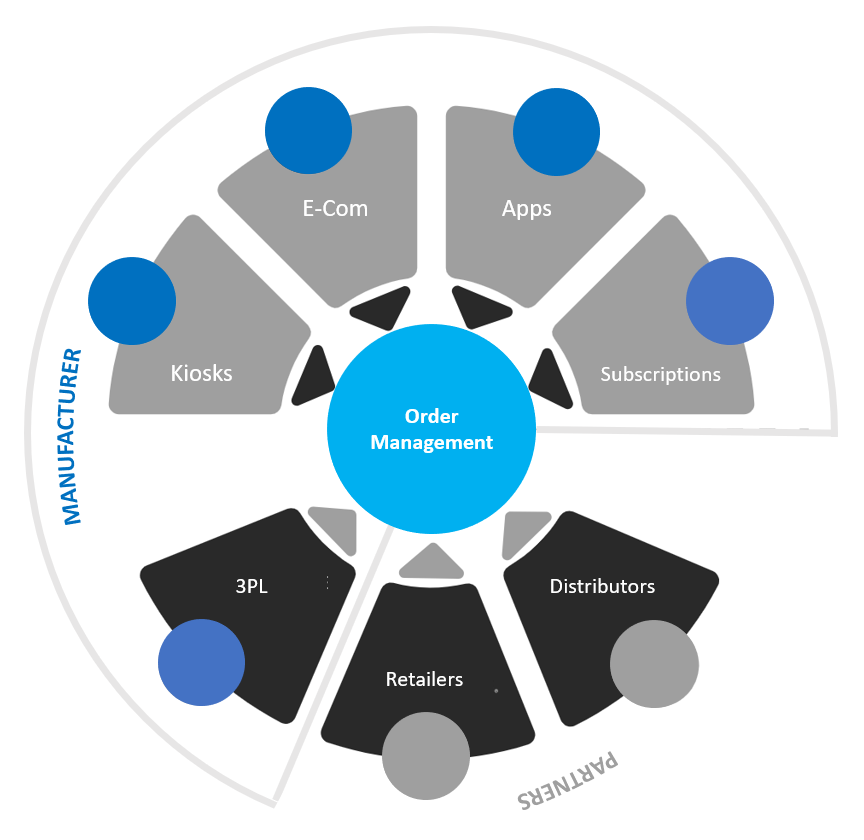What is Direct to Consumer (D2C)
Said simply; Direct to consumer is a term that means when manufacturers engage directly with their end customers without selling/engaging through a retailer, distributor, wholesaler or some other outlet. It means the manufacturer stays in control of the entire customer experience, starting with brand awareness, through delivery and usage, ending in brand advocacy. Frequently misunderstood, going Direct to Consumer is not just a play to get to higher margins or better profitability.
What can D2C mean to Manufacturers
If you’re manufacturer, regardless of your existing go to market strategy, the final sale/conversion will benefit you. When we’re talking about going direct to consumer in context of manufacturing companies, we typically talk more about the paradigm shift in how this enables you to engage with your end consumers to nurture brand awareness and advocacy, opposed to it just being positioned as yet another channel of sales and revenue.
If you’re thinking this through, you will very early on in your endeavor realize that going Direct to Consumer introduces risk of channel cannibalization (channel conflict). Ultimately, if you are simply moving sales from one channel (B2B) to another (D2C), you will not see the business growth you and your company is looking for. In our experience, this is the ultimate challenge you will face as a manufacturer when introducing this direct to consumer relationship. Instead of measuring your success of this initiative against typical KPIs such as e-commerce revenue or channel performance, you need to think about the channel shift (revenue moved from B2B to D2C) introduced and evaluate that against your partner (like distributor and retailer) satisfaction and your customer lifetime value (CLV).
If you see your existing revenue streams (like B2B sales numbers) being compromised due to this new initiative, you are putting your existing business model at risk. In our experience, the biggest contributor to this compromise in existing revenue streams is the satisfaction of your existing partner network (like distributors and retailers) – especially if you are in a competitive market, where there may be alternative options to your product offerings.
How we solve for Channel Cannibalization with Optimizely and Kibo Commerce
It is not a ‘one size fits all’ answer. Unfortunately. With that said, we though see two trends re-surfacing frequently across the various Direct to Consumer initiatives we’ve supported on behalf of world-class manufacturing companies.
Position your initiative to benefit your partners
Make sure you clearly define the business drivers behind the initiative. If you are positioning the initiative to gain market-share through better brand awareness (top-funnel), advocacy and customer satisfaction, you will ultimately see that your partners buys more in to the idea. Simply said; they will be benefiting from this initiative as well, directly hitting their bottom line. If it becomes a revenue or sales growth conversation within your organization on the manufacturer side, you will see skepticism when the initiative surfaces within your industry. This is where you need be extremely careful.
In order to hit hard on brand awareness, advocacy and customer satisfaction, you will see an Digital Experience Platform like Optimizely being a huge part of that.
Share the success
We’ve seen a clear trend in the success of our clients. When any type of direct sales success is shared with their partners, the partner satisfaction increases with the introduction of the direct to consumer relationship. If you are introducing an e-commerce component to your direct to consumer go-to-market strategy, partners very quickly react to the risk of them loosing out because of it. Introducing an enterprise Order Management System to your Optimizely powered experience, like Kibo Commerce, may be a good technical strategy to keep your partners engaged. Through tactics like order-routing, you can, as an example, offer up the sales opportunity to your partners, for them to own the fulfillment and delivery of (hence recognize revenue from).
Fundamentally it means that you are making your e-commerce revenue growth available to your partners, which ultimately benefits both you and your partners profitability (margin sharing). Over time, as your partners start to recognize the long-tail market effects of a well-executed direct to consumer strategy, you as the manufacturer can start to dial down the revenue sharing gradually – especially when the increased brand awareness and advocacy is being recognized as the source for organic growth in the ecosystem around your brand.
I hope my two perspectives on the topic acts as inspiration on your side as a manufacturer. If you are looking to explore how we, as a digital transformation partner, can assist you in this journey, you are more than welcome to reach out for continued conversation.
This article was originally published on Optimizely Fellow Blog: Two Tips to a Successful 'Direct to Consumer Strategy' for Manufacturers








